MATTERS OF OBSESSION
The writing is on the wall: street art as a vital form of expression

‘These interventions act as surprises in otherwise mundane passages, and sometimes we just need something to take us, for a moment, out of our daily routines’ says Dane Stops.
It pops up on the side of a street, at a bus station, across a train or on a wall: street art, a form of visual art, murals or graffiti, that is usually created on public spaces or spaces visible to the public, is a cultural communicator to any urban area, and gives a city character. From Jean-Michel Basquiat’s informal work with SAMO on the walls of New York City to ‘The Biggie’, a commemorative mural in Brooklyn for the late Notorious B.I.G, or Banksy’s work around the world, the South African graffiti scene and murals on the Berlin Wall, street art not only transforms the walls of a city, it often leaves an imprint of the zeitgeist, a cultural commentary of sort, public homages, reflections, fights and visual rebellions.
According to Graffiti South Africa, a website that showcases the work of local street and graffiti artists, “The graffiti scene in South Africa is still relatively young, but it is growing rapidly. Graffiti as street art seems to have taken off after the abolition of apartheid and the rise of the hip hop culture in the early 1980s. Cape Town is regarded as the ‘mecca’ and the movement soon spread to other cities like Johannesburg”. Street art is also widely influenced by cities’ subcultures.
In May 2019, assistant entertainment editor at Venice High School student newspaper The Oarsman in LA Sonya Curiel noted, “Street art is a part of cultural heritage. It could either show complex narratives or help the community look aesthetically appealing. It is a form of art that is accessible to anyone and could be created by any artist. It could be used as a powerful tool against any social tension from protests to racism”.
Street art vs graffiti
Both street art and graffiti have often been misunderstood and dubbed as vandalism; a 2018 paper by Isabelle Brajer titled “The problem of vandalism on contemporary outdoor murals and street art”, and published on Open Edition Journals highlighted the inevitability of street art and how it’s been stigmatised.
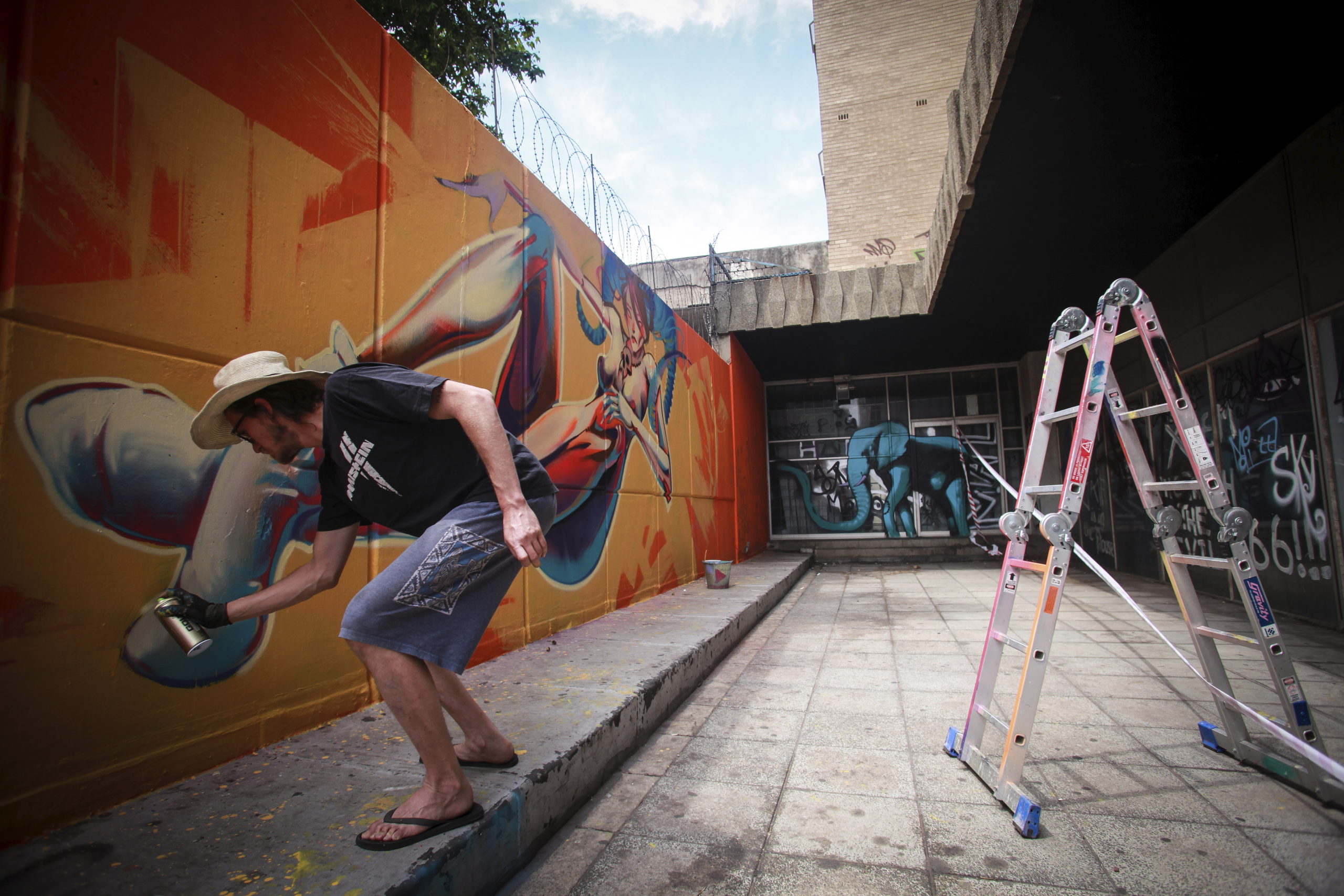
Graffiti Artist, Veronika Paint works on a street mural on October 7, 2014 in in Braamfontein, South Africa. This is for the City of Gold Festival, which looks at establishing Johannesburg as a venue for local as well as International street artists. (Photo by Gallo Images / The Times / Kevin Sutherland)
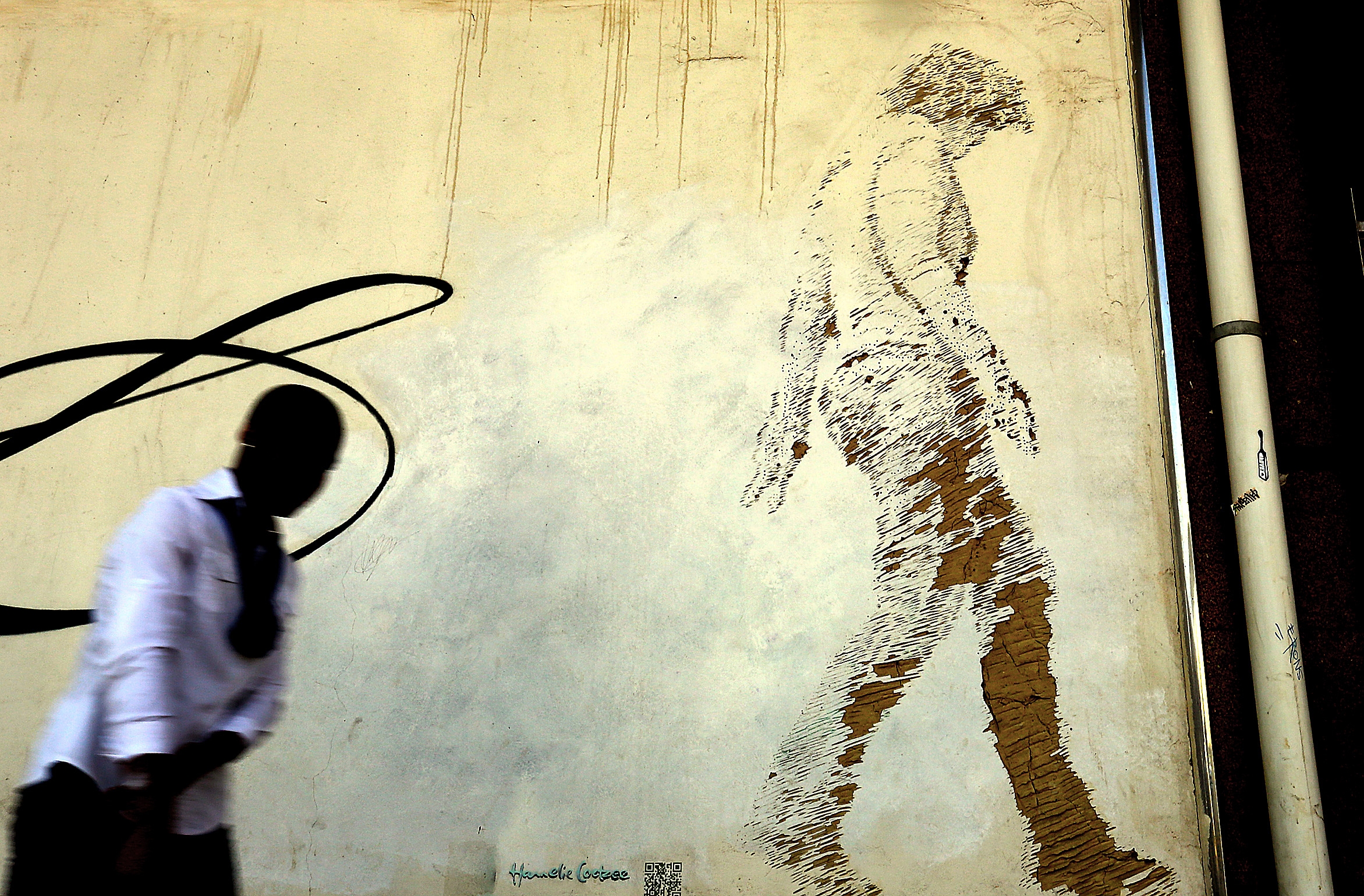
An artwork called “Trapsuutjies” by Hannelie Coetzee at Maboneng Precint on August 27, 2013 in Johannesburg, South Africa. Maboneng Precint is littered with public art, some of which was created as part of the I Art Joburg project. (Photo by Gallo Images / The Times / Moeletsi Mabe)
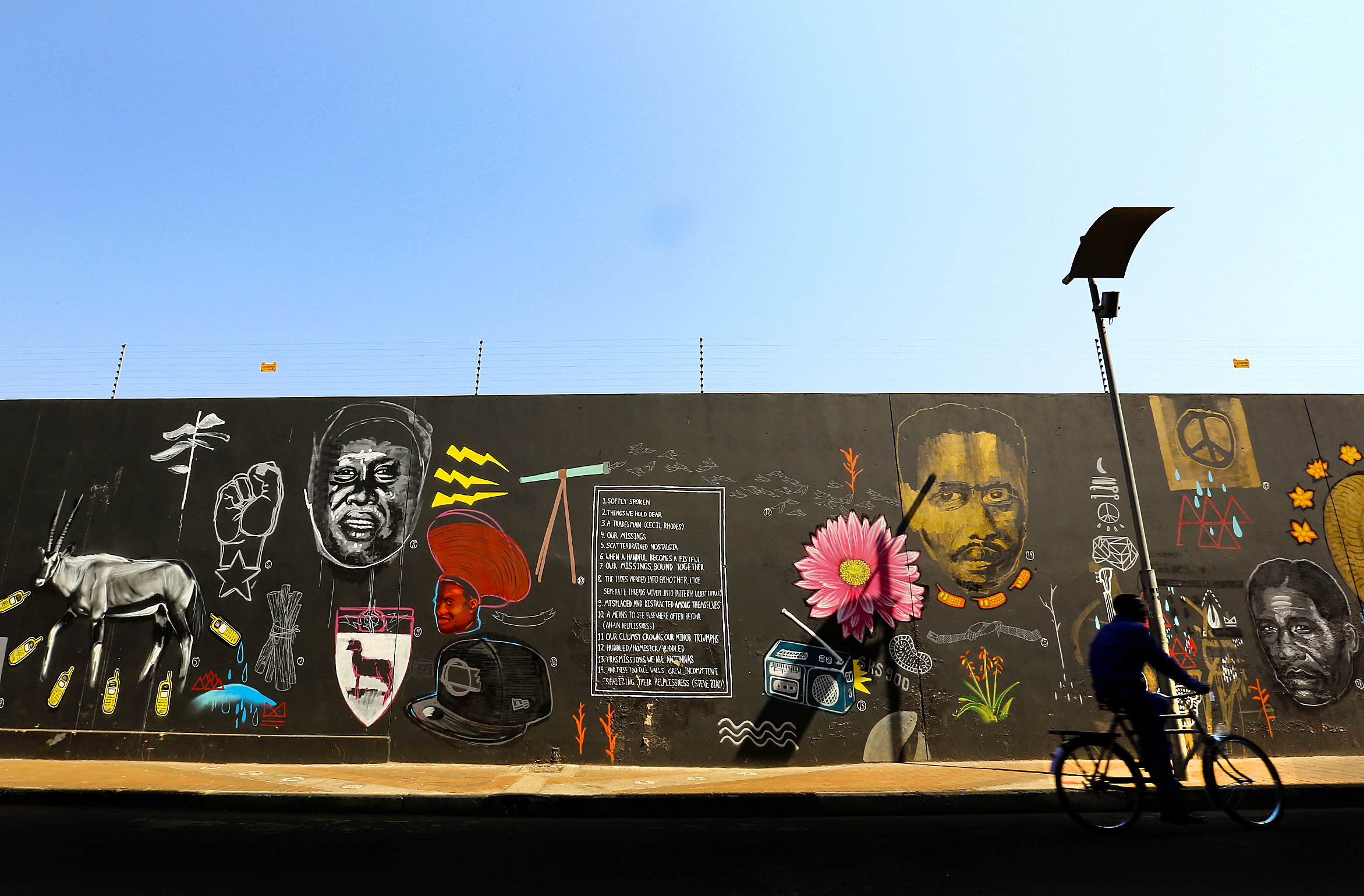
An acrylic wall at Maboneng Precint on August 27, 2013 in Johannesburg, South Africa. (Photo by Gallo Images / The Times / Moeletsi Mabe)
“Tagging has become a ubiquitous sight in cities. For many years, street art was not differentiated from tagger vandalism. In many parts of the world, outdoor murals are still referred to as ‘graffiti’. In more recent years, the proliferation of serious artists choosing street art as their creative medium has resulted in a recognition or even acclamation of this form of expression as bona fide art”.
And indeed, although street art and graffiti are both being created in public space, on city walls, they seem to fall into different categories. As explained by Christina Wither on Difference Between, although street art and graffiti do take up the same space in the city’s streets, one of them is sanctioned and the other is illegal.
“Street art, in contrast to graffiti, is sanctioned by the authorities. Street art has a history of approval for improving and uplifting areas of the town or city. Recognised artists are often called upon to put together these artworks. Street artists willingly sign their work with their own names. Graffiti artists remain anonymous and hide behind tags or work in groups to perform their illegal art expressions… Street art has a wider appeal to the majority due to the pictorial aspect of the work”, she says, adding that “Graffiti has been part of society for longer than street art. Although they are both considered to be art forms, street art is more pleasing to the eye. It has relevance to areas where buildings may need to be decorated to uplift the area”.
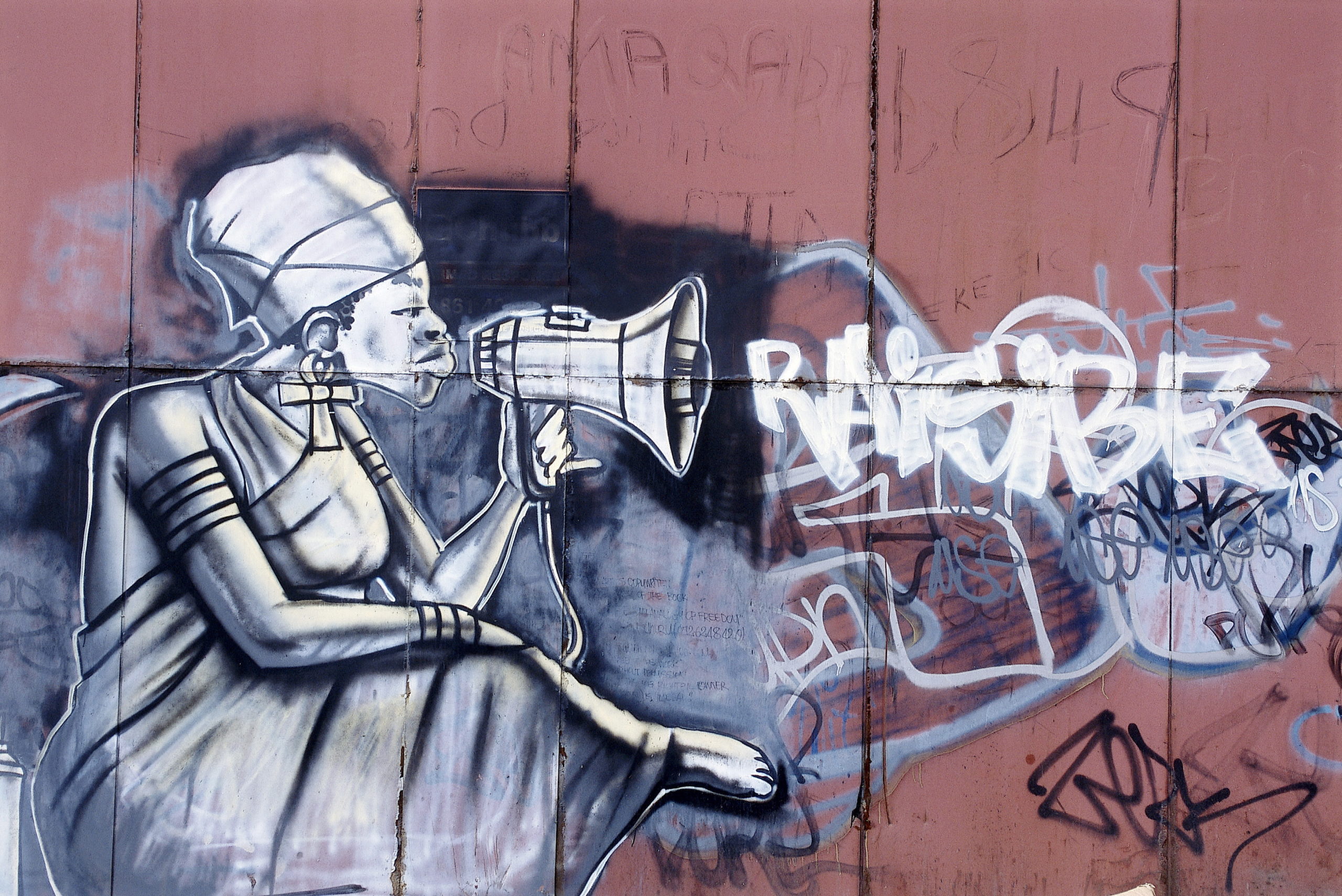
South Africa, Gauteng, Johannesburg. Graffiti illustration on wall in Newtown.
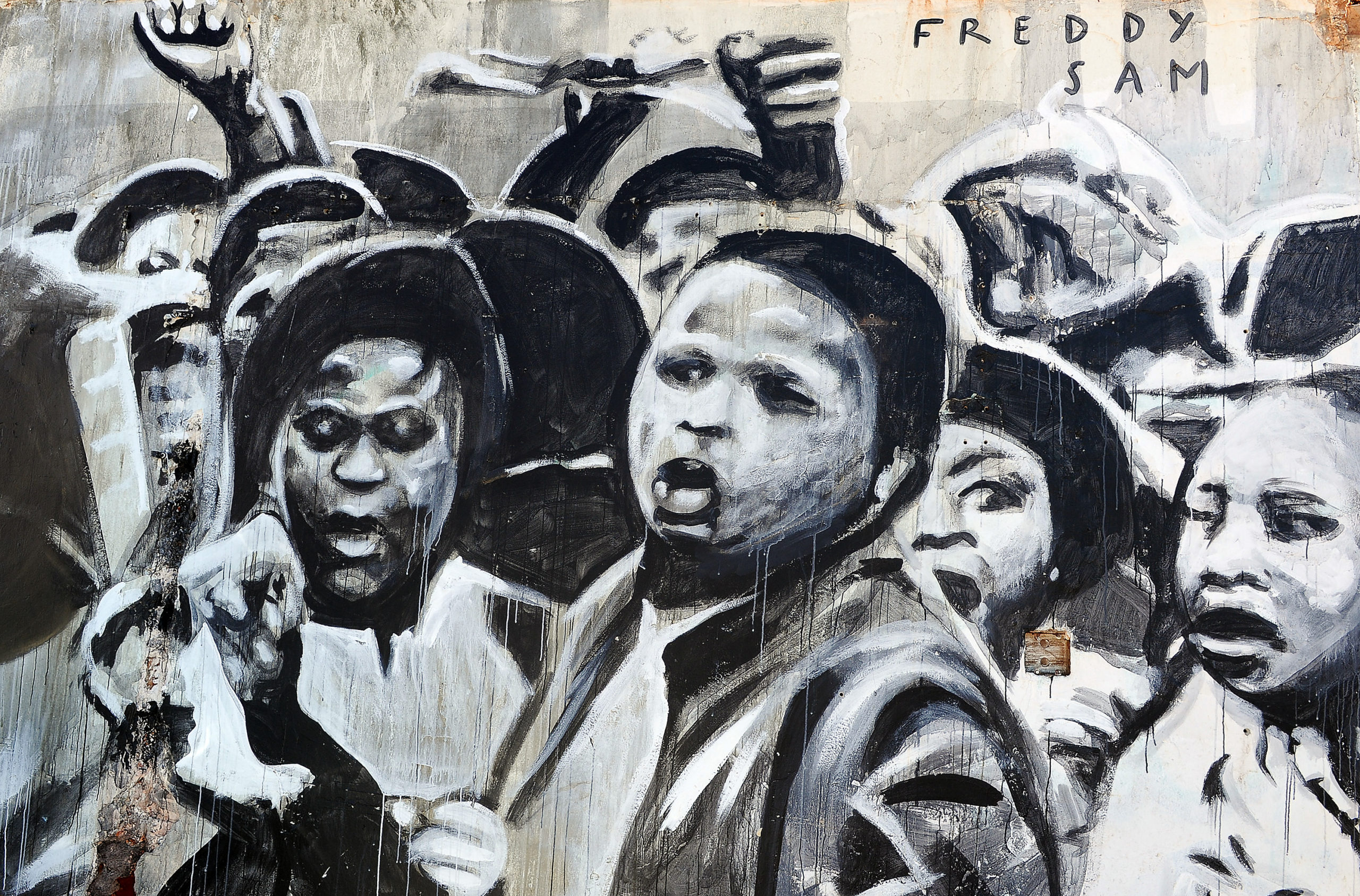
A general view of a mural on Albert Road in Woodstock on July 10, 2014 in Cape Town, South Africa. Woodstock is considered the most densely packed urban art spot in the country. (Photo by Gallo Images / Foto24 / Nasief Manie)
Guerilla art
Street art can be used as a powerful tool to either communicate a message or stand up for a social justice issue.
The history of street art in South Africa seems to be rooted in the ’80s. In 2016, Dave Mann wrote on 10and5 about the power – and the controversies – associated with the art form. From Cape Town street art legend, Falko, who’s hailed as the “Godfather of Street Art” to other big names like “Gogga, Falko, and MakOne1”… “much of the graffiti (at the time) was political, marking the white walls of the apartheid regime and calling for the release of political prisoners. It was a time that many of today’s established graffiti writers look back on as their inspiration,” says Mann.
Now, last August, for Women’s month, Cape Town-based non-profit art organization BazArt, which works at showcasing “the power of street art and its ability to transform communities and individuals”, unveiled a mural in Maboneng, Johannesburg, called, “Art for women”. The project features activists and musicians; Zolani Mahola, Nozuko ‘ZU’ Mapoma, Kanyi Mavi, Mila Smith, Ami Faku, Msaki, Azana and Zoë Modiga. The mural with a turquoise-green background, which takes up a whole wall, also has a barcode that links you to the Apple Music playlist that played a big part in the project. Alexandre Tilmans, co-founder of BazArt explained, “With the art of women we wanted not only to create a visual message but also an audio message mixing two forms of art in order to reach as many people as we could to create awareness on gender-based violence. It was a way for us to mix two audiences or types of communities, showing them the importance of our message.”
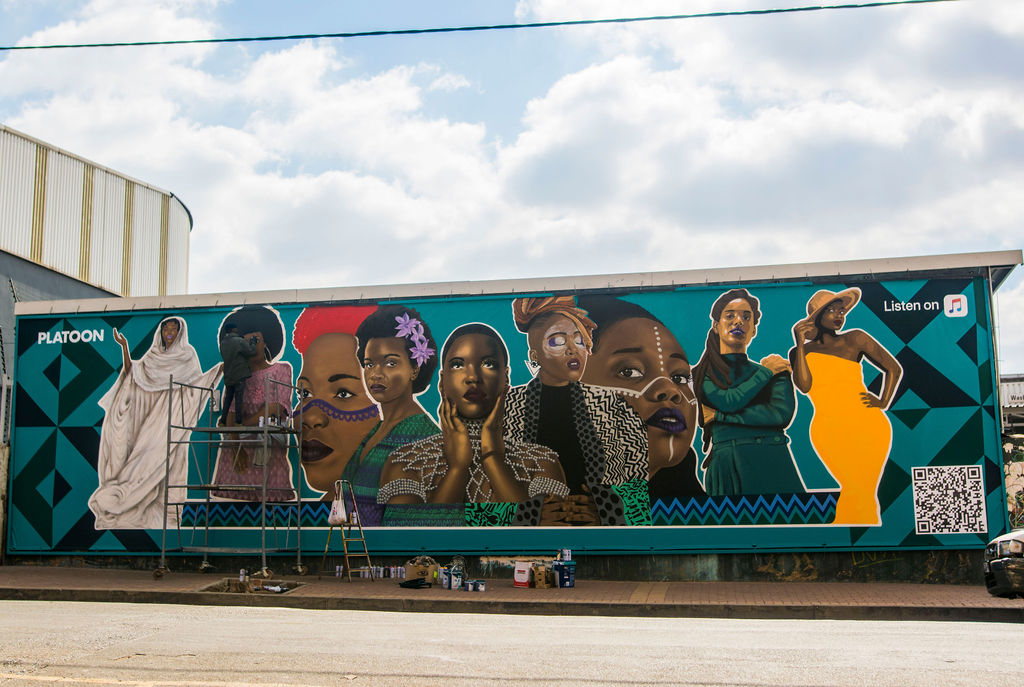
Image supplied (BazArt)
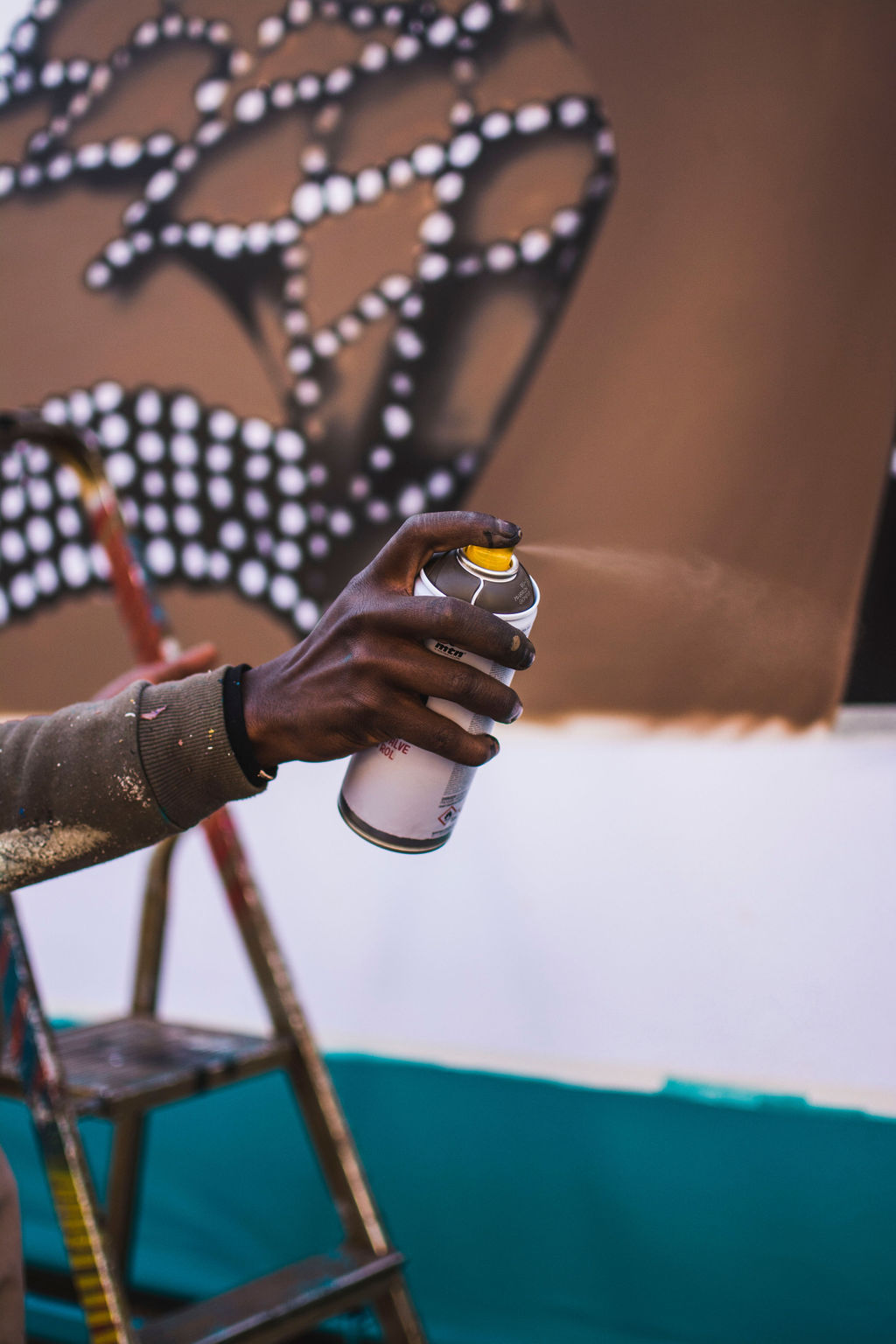
Image supplied (BazArt)
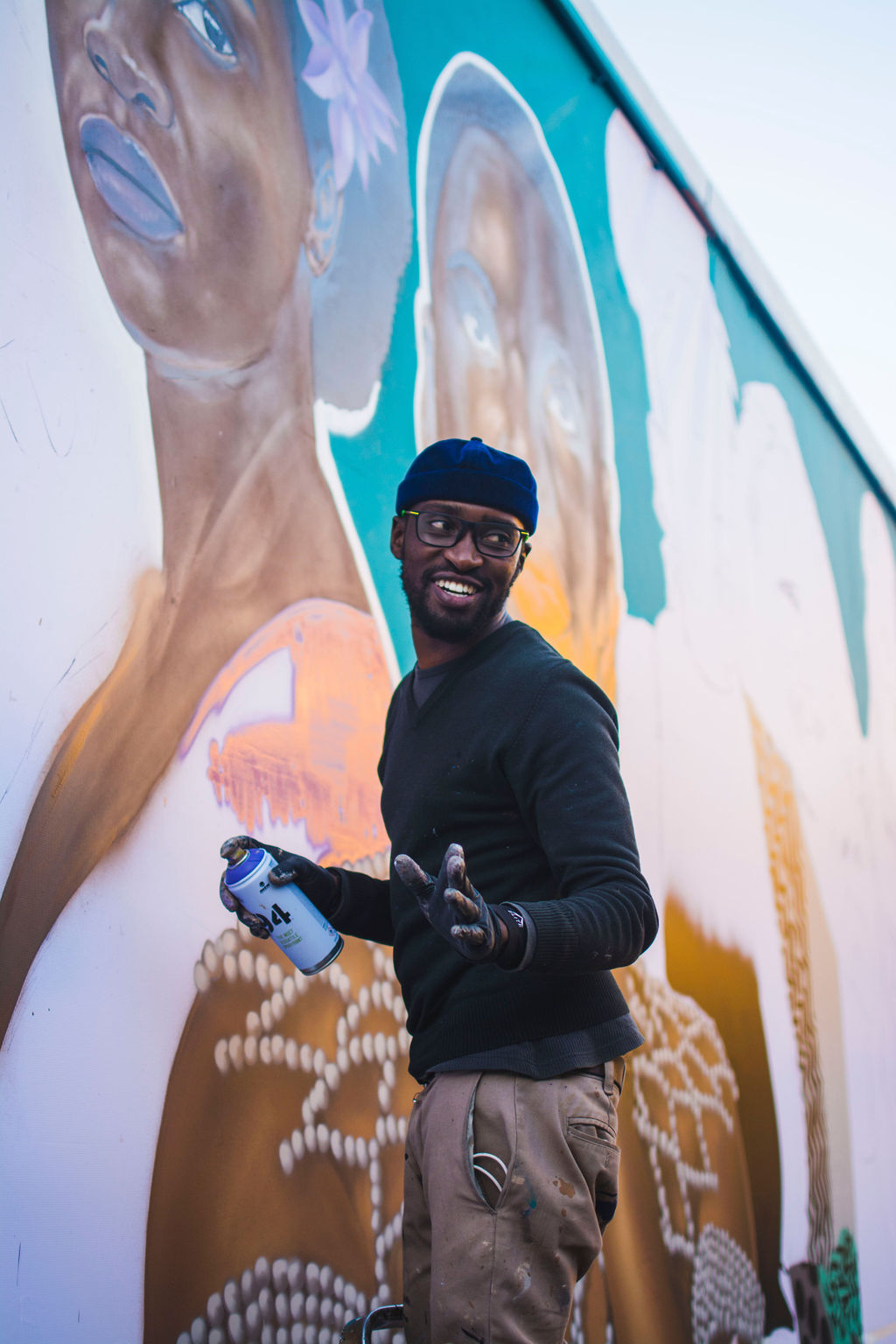
Image supplied (BazArt)
The mural was painted by artist Dbongz and aims to shed light on gender-based violence in South Africa.
For Tilmans, street art was the perfect vehicle not only to showcase powerful art and creativity, but also to spark necessary conversations around the topic of GBV. He says, “We came to the conclusion that anything that is painted on a wall actually creates a dialogue between the artist and whoever sees it, should it be residents, communities or bypassers. Creating a dialogue means inspiring, making people talk to one another; a form of education or creating awareness. This is why we feel that painted wolves or street art is so important”.
But that’s not all. Tillmans adds how street art can play a role in social justice. “If we take graffiti in the ’80s, it was a form of very strong communication. The messaging that was used at this time of political unrest was meant to shock, create awareness and express strong views. What we have seen recently with the current events, should it be gender-based violence or the pandemic, (are) walls that have been painted, creating an awareness and a dialogue between the citizens of this world. It is interesting to note that those walls that have been painted in the four corners of the planet have also been shared on social media, creating a bigger buzz than just one wall by itself.”
Behind the art
Durban-based artist Mook Lion tells Maverick Life he also believes in the power of street art to spark and shift conversations but also to translate the spirit of the city – and those who govern it.
“They say ‘the writing is on the wall’… I think a lot can be gleaned from the street art of a city. Cities with a conservative attitude towards street art tend to have aggressive angry graffiti. More liberal cities embrace street art and the culture industries benefit from it. Street art can also be used by the rich and powerful to gentrify certain areas or it can be used subversively to critique the capitalist system. Any artwork in the public space is inevitably political and therefore has an effect on the economics of a city.”
In South Africa, street art can be seen throughout the country although it seems more prevalent in Cape Town and Joburg than it would be in Durban, for example. Lion says, “Within South Africa, I feel Jozi has the most exciting street art scene, there seems to be a progressive and accepting attitude towards it.
“There is a lot of unsanctioned work, which to me is very important, while there is also an abundance of massive high-quality murals. Durban is a bit more conservative, with a lot of cleaning of unsanctioned work. There is however a small, dedicated and talented group of street artists who keep the small scene alive. Unfortunately, lots of Durban’s most ambitious and talented artists leave in search of brighter opportunities,” he notes.
“Art is a vital part of successful human existence although the benefits are not easily quantifiable because they are emotional and psychological. So we need art in our lives to live well. It seems so simple that we should transform the abundant and depressing walls in our urban environments with the creative energy of our artists. Galleries and museums are fantastic but they should not be the only platform to display visual art. The progressive cities have realised this and that is why street art has become so popular,” he adds.
Artist Giffy Duminy, who’s also based in Durban, concurs, adding that “the public space is a real-life gallery. There are all sorts of things going on. There are constant changes in the display of the space, the people passing through, but the structures are always there. In the public space you can create a sort of ‘gallery’ exhibition – spread across your city. Paint 10 walls in the public eye in your city and you have yourself a show.”
Duminy believes that street art does well to serve the public and isn’t exclusionist. “The great thing about murals is that they stay in one place, visible for years, even decades. Compare this to art in a gallery that may last a few months, at most, and then maybe never be seen again. Mural art in the public space is a feature of the area. It becomes a landmark to some, and a beacon of joy to others. I think gallery culture has created a fairly elitist art appreciation market.”
Durban University of Technology lecturer and artist, Dane Stops says that although street art doesn’t intentionally bridge the gap between the community, he does feel that, “it’s made in public and not the comfort of studio, allowing interaction with the artist while they are in the process of making the art and it allows interaction with the finished art in ways that go beyond the control of the artist”.
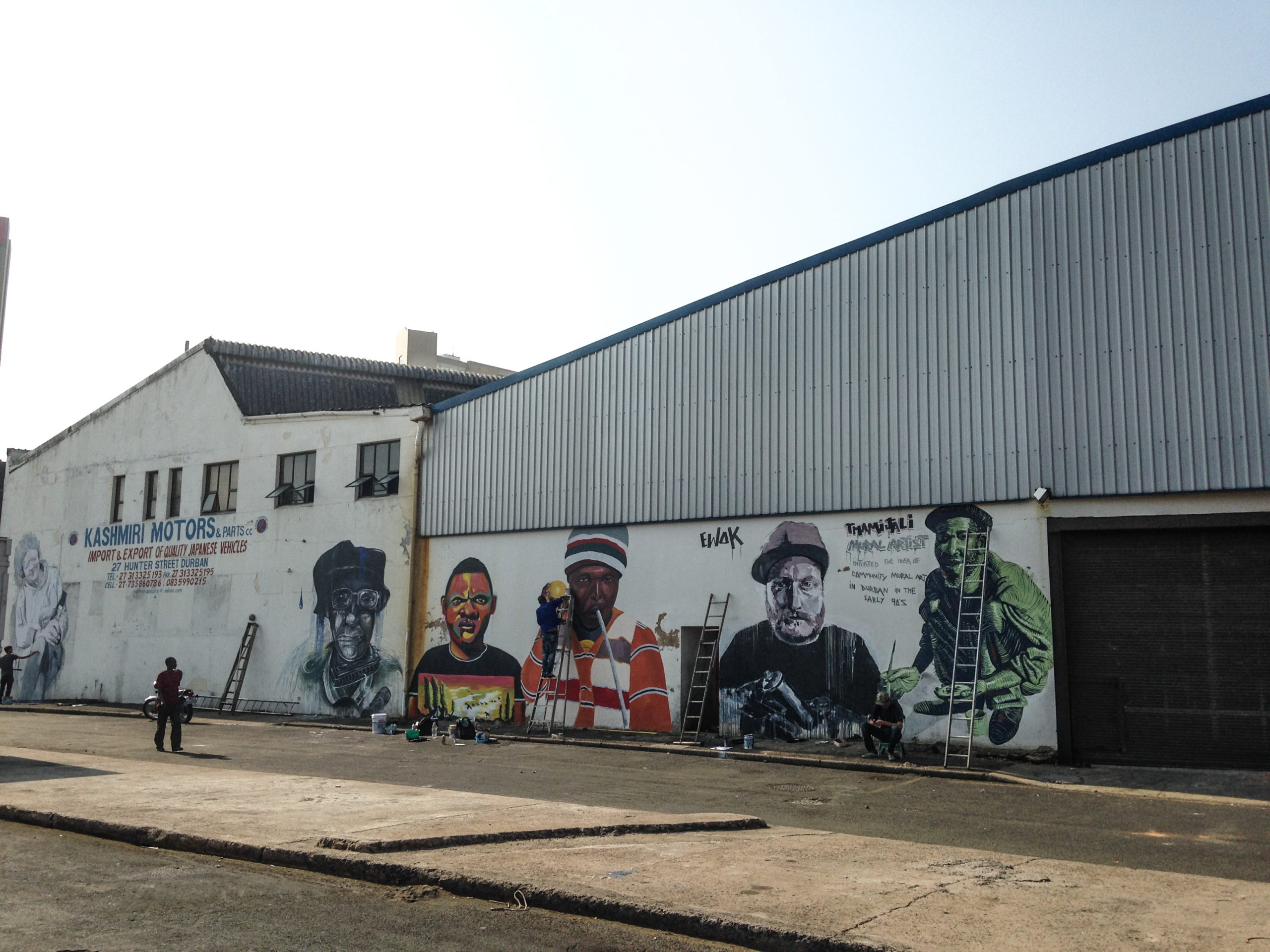
Image supplied (Photograph by Dane Stops)
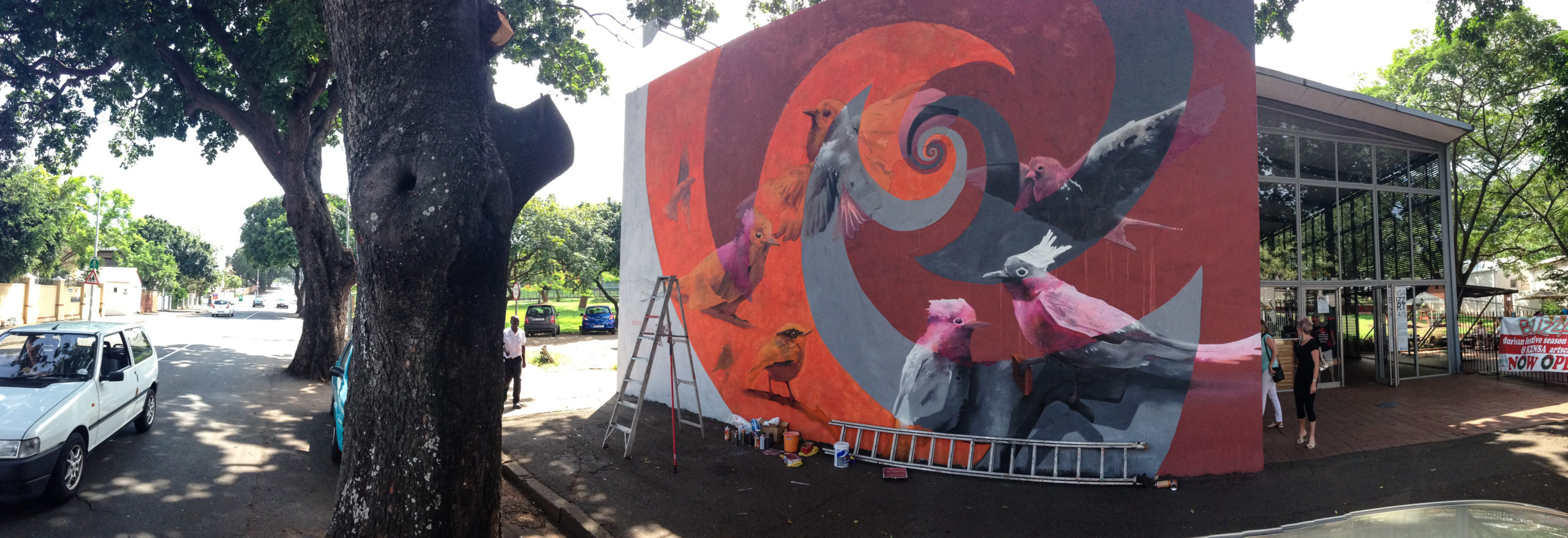
Image supplied (Photograph by Dane Stops)
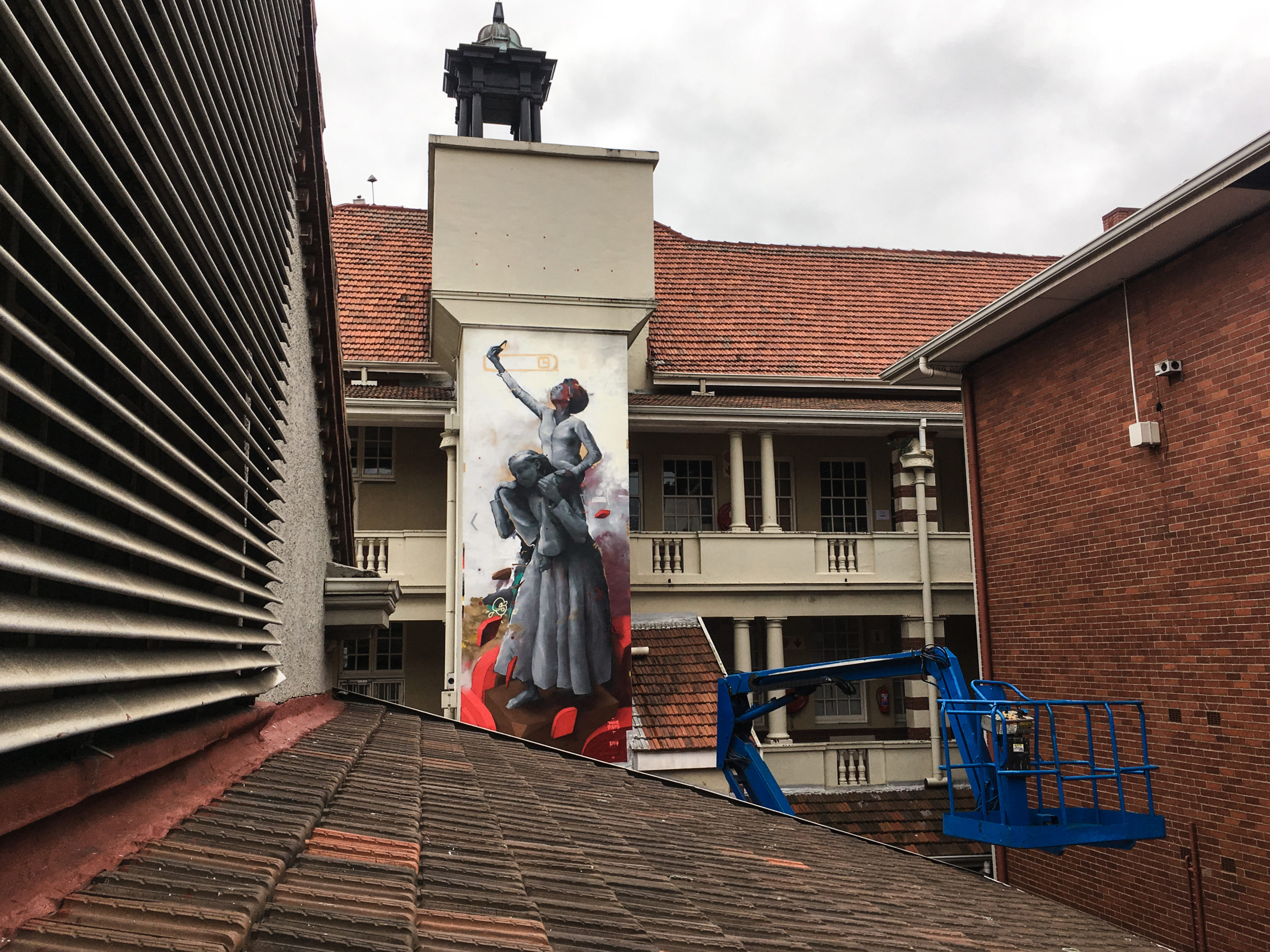
Image supplied (Photograph by Dane Stops)
In an industry that sees men take up the most space, South African multidisciplinary artist Liberty Du, famously known as Faith47, has been creating works in 39 different countries and is now based in Los Angeles – although she still does work in South Africa.
Because of its more rebellious form and expression, and because it can be sanctioned, erased or punished, street art doesn’t follow conventional art rules. But its effects and impact on communities and the public – be they collectors (as with Banksy) or passers-by – can be as relevant, provoking and inspiring as pieces exhibited in galleries and museums around the world.
Stops explains that, in theory, street art’s impact can be immense “because it has the potential to engage with such a large audience. In reality, the artist behind the work and their intentions create limitations through selection of subject matter, aesthetic approach and site of execution. Street art is often used as an umbrella term to include murals, graffiti, stencils, etc. The name suggests that it’s really any art that is on the street, but its foundation is artistic interventions within public space.
“These interventions act as surprises in otherwise mundane passages, and sometimes we just need something to take us, for a moment, out of our daily routines”. DM/ML


















 Become an Insider
Become an Insider
Comments - Please login in order to comment.